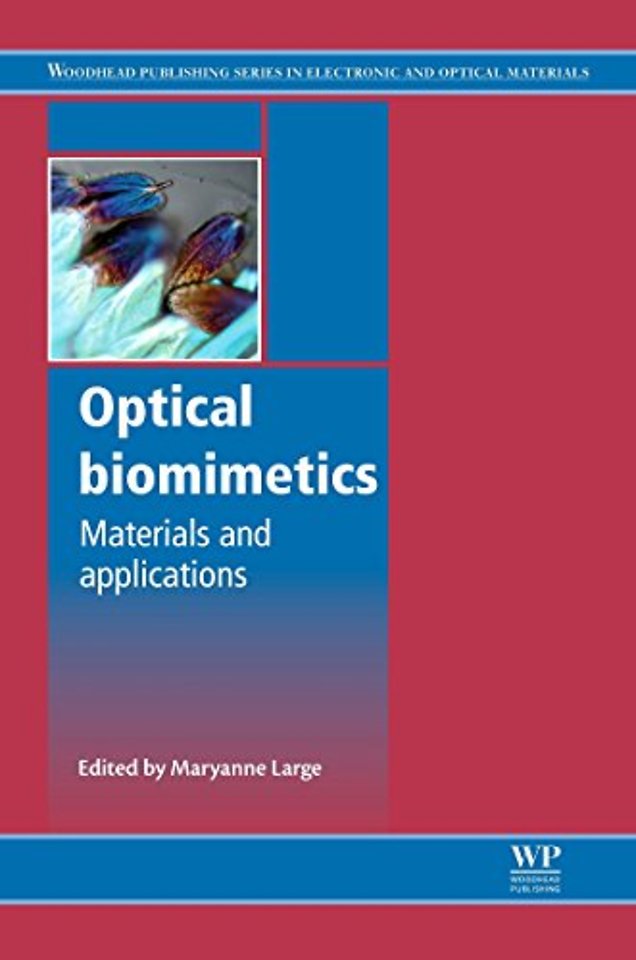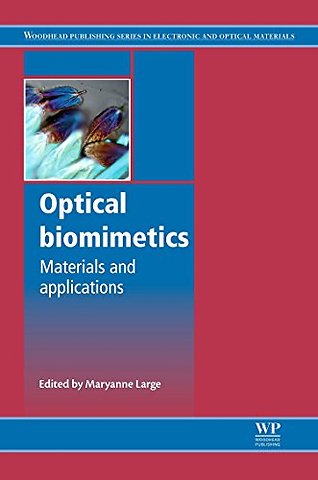Optical Biomimetics
Materials and Applications
Gebonden Engels 2012 9781845698027Samenvatting
Optical biomimetics, the study of natural systems to inspire novel solutions to problems in optical technologies, has attracted growing interest. Optical biomimetics reviews key research in this area, focusing on the techniques and approaches used to characterise and mimic naturally occurring optical effects.Beginning with an overview of natural photonic structures, Optical biomimetics goes on to discuss optical applications of biomolecules, such as retinylidene and bacteriorhodopsin, polarisation effects in natural photonic structures and their applications, and biomimetic nanostructures for anti-reflection (AR) devices. Control of iridescence in natural photonic structures is explored through the case of butterfly scales, alongside a consideration of nanostructure fabrication using natural synthesis. The investigation into silk optical materials is followed by a final discussion of the control of florescence in natural photonic structures.With its distinguished editor and international team of expert contributors, Optical biomimetics is a valuable guide for scientists and engineers in both academia and industry who are already studying biomimetics, and a fascinating introduction for those who wish to move into this interesting new field.
Specificaties
Lezersrecensies
Inhoudsopgave
Rubrieken
- advisering
- algemeen management
- coaching en trainen
- communicatie en media
- economie
- financieel management
- inkoop en logistiek
- internet en social media
- it-management / ict
- juridisch
- leiderschap
- marketing
- mens en maatschappij
- non-profit
- ondernemen
- organisatiekunde
- personal finance
- personeelsmanagement
- persoonlijke effectiviteit
- projectmanagement
- psychologie
- reclame en verkoop
- strategisch management
- verandermanagement
- werk en loopbaan

